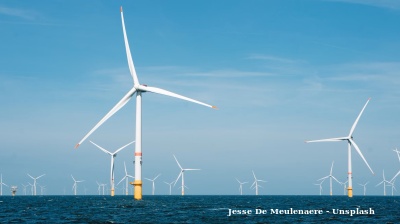India has set its sights on building a fully indigenous solar value chain, with the goal of achieving domestic solar cell manufacturing by 2028, according to a government of India press release. The plan, announced at the recently held State Review Meeting on Renewable Energy organised by the Ministry of New and Renewable Energy (MNRE), marks a significant step towards reducing import dependence and strengthening the country’s renewable energy base.
Union Minister for New and Renewable Energy Pralhad Joshi said India is moving beyond the production of solar modules to building capabilities in wafers and ingots, thereby ensuring that the entire solar manufacturing ecosystem can be established within the country. According to the Minister, the effort is expected to generate employment, attract investment, and reinforce India’s position as a clean energy manufacturing hub.
Joshi also noted the progress made by states in advancing renewable energy initiatives, which has contributed to India’s standing as a global leader in the sector. He highlighted that India has already crossed 251.5 GW of non-fossil capacity, taking the country more than halfway towards its 2030 target of 500 GW.
Key schemes highlighted
The Minister drew attention to flagship initiatives such as the PM Surya Ghar Muft Bijli Yojana, under which nearly 2mn households have benefitted. He urged states and distribution companies (DISCOMs) to ensure strict quality compliance, finalise agreements promptly, and pass on tariff credits to consumers. He also spoke about the PM-KUSUM scheme, which after a slow start, has gained momentum with demand for fresh allocations from state governments. A second phase of PM-KUSUM is expected to be launched after March 2026.
On free electricity, Joshi said benefits should be distributed in a financially sustainable manner. Nearly half of households under the Surya Ghar scheme now report zero electricity bills, which he described as an example of long-term relief being balanced with fiscal stability.
Renewable energy growth and regulatory clarity
India recently reached the milestone of having 50% of installed electricity capacity from non-fossil fuel sources, five years ahead of target. Joshi, however, cautioned that capacity creation must be matched by effective utilisation. He called on states to expedite Renewable Purchase Obligations (RPOs), power purchase agreements (PPAs), and transparent land allotments. He also advised against delaying procurement in the expectation of lower tariffs, warning that such delays could undermine growth momentum.
The Minister pressed states to improve ease of doing business in the renewable sector by adopting single-window clearance systems, easing compliances, and resolving land access issues. Investor confidence, he said, depends on proactive facilitation. Wind-rich states were urged to prepare time-bound plans for new site allocations and transmission readiness.
Support for domestic manufacturing
On manufacturing, Joshi pointed to the success of the Production Linked Incentive (PLI) scheme for high-efficiency solar PV modules. With an outlay of INR240bn, the scheme has already created 100 GW of module manufacturing capacity, mobilised investments worth INR500bn, and generated over 12,600 direct jobs.
He also welcomed the recent cut in GST on renewable energy devices and services from 12% to 5%, covering solar cookers, wind turbines, biogas plants, and hydrogen systems. The move, he said, will make clean energy technologies more affordable and accelerate adoption across the country.
Collective effort required
Joshi stressed that India’s energy transition will only succeed through coordinated action involving the Centre, states, industry, and citizens. He assured full support from the MNRE and encouraged stakeholders to put forward ideas for accelerating growth.
Union Minister of State for New and Renewable Energy Shripad Naik added that both PM-KUSUM and PM Surya Ghar are central to India’s energy security and citizen empowerment. He said PM-KUSUM has installed or solarised over 1.6mn pumps out of the 4.9mn allocated, reducing annual diesel use by 1.3bn litres, cutting 40mn tonnes of CO₂ emissions, and conserving foreign exchange. Surya Ghar is currently adding 4,500 systems daily, supported by a network of more than 18,000 vendors nationwide.
Naik said both schemes represent the “spirit of India’s energy transition”, combining farmer empowerment, job creation, and emissions reduction.
Future outlook
MNRE Secretary Santosh Kumar Sarangi outlined India’s long-term renewable energy targets: 1,800-GW capacity by 2047 and 5,000 GW by 2070. He cited examples of effective state practices, such as Maharashtra’s PM-KUSUM rollout, Gujarat’s renewable clusters, and Karnataka’s land facilitation policies.
The review meeting featured state-wise assessments of Surya Ghar and PM-KUSUM, alongside presentations from industry associations on sectoral challenges. Stakeholder consultations were also held on the design of PM-KUSUM 2.0, with the aim of aligning state initiatives, industry input, and national policy to accelerate renewable energy deployment.
The event brought together senior representatives from renewable-rich states and industry bodies, underlining the government’s focus on achieving energy security, sustainability, and economic growth through a stronger domestic renewable energy ecosystem.
bneGREEN

TEHRAN BLOG: 200 days without rain
Tehran's water crisis is about decades of chaotic urban expansion, unregulated groundwater extraction, and infrastructure so decrepit that hundreds of millions of cubic metres vanish before reaching a single tap.

The Arctic and Antarctica record "off the charts" heat as polar warming accelerates
Parts of both the Arctic and Antarctic have experienced historically high temperatures in recent weeks, with weather stations in East Antarctica recording record-breaking warmth for the month of October, alarming climate scientists.

Giant glacier chunk breaks away in Tajikistan, mountain villages put on alert
Situation serves as reminder that climate crisis threatens to wreak havoc in Central Asian country.

Singapore’s green pivot – headline grabbing but still limited
Forays into offshore wind via regional cooperation with neighbours, and forward-looking bets on hydrogen and low-carbon fuels are making headlines, but the scale required to wean a heavily gas-dependent system off fossil fuels is still daunting.




